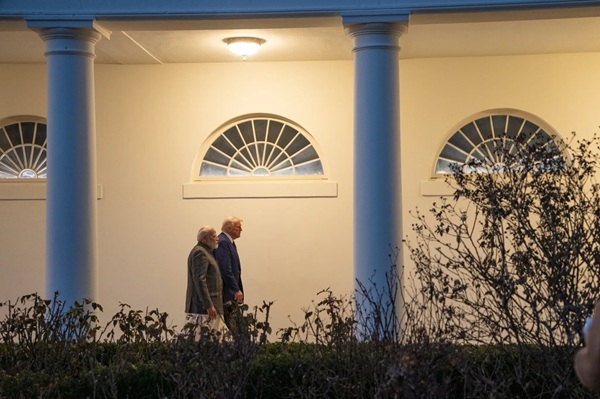.png)

Dhananjay Sinha, CEO and Co-Head of Institutional Equities at Systematix Group, has over 25 years of experience in macroeconomics, strategy, and equity research. A prolific writer, Dhananjay is known for his data-driven views on markets, sectors, and cycles.
July 31, 2025 at 5:12 PM IST
The recent announcement by the Trump administration to impose a 25% tariff on India followed four months of negotiations during which New Delhi maintained a deliberately low-key approach, hoping to minimise adverse trade action from Washington.
Contrary to these expectations, the tariff move was paired with additional punitive measures, including penalties on oil imports from Russia, unease over India’s role in BRICS, and demands to redirect defence purchases to the US. Together, these measures could lift the effective tariff rate well above the initial level announced in April 2025.
Market sentiment suggests Trump’s latest trade actions may lose traction over time, with optimism that India, like China and Russia, will stand firm. Remarks by Commerce Minister Piyush Goyal on July 5, 2025, signalled that national interests and sustainable tariff advantages would be protected. Yet this sets up a difficult and prolonged negotiation path, one unlikely to deliver straightforward gains for India.
Weaker leverage
Russia and China have sustained their positions in trade talks because of their strategic heft. Moscow’s role in Europe’s energy crisis has blunted Trump’s attempts to end the Ukraine conflict, while Beijing’s economic weight and leadership among developing economies give it significant room to manoeuvre. India’s relatively weaker bargaining position limits its options.
The US objective with India is clear: balance the trade deficit by winning greater access to Indian markets. Trump’s strategy hinges on regaining share in the global oil market. Russian crude already supplies 30% of India’s imports, eroding US market share and heightening continued Indian reliance on Middle Eastern flows. The penalties on Russian oil are designed to tilt demand towards American supply. Washington has even flagged potential investments in Pakistani oilfields to reinforce its regional leverage.
Redirecting Indian defence spending is another key plank. The US wants India to shift procurement away from France and Russia in favour of American suppliers. India has already reduced Russian arms dependence from 76% in 2009–2013 to 36% in 2019–2023, with French imports rising to 33% and American to 13%. Trump’s new tariffs target Russian-origin equipment, pushing India to accelerate this transition amid ongoing tensions with China and Pakistan.
Tariff Ripple
Mineral fuels and oil worth $13 billion and defence exports of $4.3 billion accounted for 42% of total US exports of $40.7 billion to India in 2023-24. This concentration explains Trump’s focus on oil and defence to rebalance the $45.8 billion trade deficit through tariffs, bilateral agreements and higher US export volumes. Recent US trade deals with the UK and Indonesia, which granted zero tariffs on US products, underscore Washington’s ambition for sweeping access to Indian markets.
For India, the sticking points are agricultural imports and its support for BRICS de-dollarisation. Domestic political pressures make concessions in these areas unlikely. Any retreat would be costly for the Modi government, both economically and diplomatically.
Sectoral fallout from the 25% tariff is uneven. IT services exports remain unaffected, while goods face sharper pressure. Automobiles see limited OEM exposure but ancillary firms risk margin stress. Oil and gas exports are shielded, though Russian crude disruptions could erode earnings for public sector oil marketing companies and private refiners. Pharmaceuticals, which supply 40–50% of US generics, are exempt pending a Section 232 review, with costs likely to pass on to US consumers if imposed. Textiles face a cost disadvantage, squeezing garment exporters, while chemicals and capital goods, which together make up 15–17% of India’s exports to the US, are most vulnerable. Consumer staples and defence are relatively insulated, while banking feels the knock-on effects of slowing exporter credit demand and weaker economic growth.
Corporate results already reflect the strain. Earnings this season show softening demand, eroded margins and job losses in IT, while hopes of US Federal Reserve rate cuts have faded amid persistent inflation. If these trends persist, valuations could remain under pressure and downside risks may deepen.
Trump’s tariff push, billed as a corrective to trade imbalances, risks hardening into structural friction. Unless India can use its energy demand and defence diversification to bargain more effectively, the much-vaunted personal rapport between Modi and Trump may deliver little by way of market relief.




